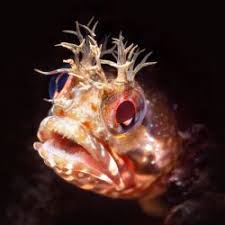The Role of Dragons in Chinese Rituals and Sacred Ceremonies

Dragons are among the most iconic symbols in Chinese culture, deeply embedded in the country’s spiritual and cultural heritage. Their association with power, authority, and the divine makes them pivotal in a wide range of rituals, including offerings, sacrifices, and sacred ceremonies. In ancient China, dragons were not just mythical creatures; they were considered harbingers of prosperity, protectors of the realm, and intermediaries between the human world and the divine. The importance of dragons in religious and ceremonial practices cannot be overstated, as they played a key role in shaping the cultural and spiritual life of Chinese society.
This article explores the profound role of dragons in Chinese rituals and sacred ceremonies. We will examine how dragons were incorporated into religious practices, their symbolic meaning in these rituals, and how they continue to influence modern-day ceremonies in Chinese culture.
The Dragon as a Symbol of Power and Divinity
In Chinese mythology, dragons are often associated with the heavens and the natural elements, serving as messengers and protectors of the divine order. Unlike the destructive dragons of Western mythology, Chinese dragons are typically benevolent and powerful, embodying cosmic forces that maintain harmony in the universe. The dragon is a symbol of imperial power and is traditionally linked to the emperor, regarded as the “Son of Heaven,” who ruled by divine mandate. As such, the dragon became central to many sacred and state rituals, representing the connection between the earthly and heavenly realms.
Dragons are believed to control natural elements such as water, rain, and wind, which were vital to agriculture and survival in ancient China. This association with the forces of nature made them a central figure in agricultural and weather-related ceremonies. The role of the dragon in these rituals was not only to ensure a bountiful harvest but also to maintain cosmic order and balance.
Dragons in Ancient Chinese Rituals: A Brief Overview
The earliest references to dragons in Chinese rituals can be traced back to the Shang Dynasty (1600–1046 BCE), where they were often depicted on ceremonial bronzes, jade artifacts, and in religious rites. These early representations of dragons were not only artistic expressions but also played a role in the worship of deities and ancestral spirits. The dragon symbolized both the power of the gods and the ruler’s connection to the divine, making it central to state rituals and religious ceremonies.
In ancient times, the emperor, as the Son of Heaven, performed sacrificial rituals to maintain the harmony between heaven and earth. These rites often involved the offering of sacrifices to the gods, with the dragon serving as a symbol of divine approval and protection. The presence of the dragon in these rituals reinforced the emperor’s divine right to rule and his responsibility to maintain harmony within the realm.
The dragon was also associated with various gods and deities in Chinese religion. For example, in Daoist ceremonies, dragons were believed to embody the cosmic forces that governed life and death, and they played a role in guiding souls to the afterlife. In Buddhism, dragons were seen as protectors of the Dharma, safeguarding sacred teachings and helping to establish peace and order.
The Role of Dragons in Agricultural and Weather Rituals
One of the most significant roles of dragons in Chinese rituals was their involvement in agricultural ceremonies, particularly those related to rainfall and fertility. As dragons were believed to control water and rain, they were integral to rituals that sought to ensure a good harvest and prevent droughts. Farmers and rulers alike would offer prayers and sacrifices to the dragon gods, hoping for favorable weather conditions that would allow crops to grow and thrive.
The most famous example of this is the dragon dance, which remains an essential feature of Chinese festivals, particularly during the Lunar New Year. The dragon dance is believed to invoke the dragon’s power to bring rain and ensure a prosperous year. In ancient times, dragon dances were performed during agricultural festivals, with the belief that the movement of the dragon would stimulate the heavens to send rain to nourish the crops.
In some regions of China, people would also perform water-splashing rituals to honor the dragons. These ceremonies were performed near rivers, lakes, and other water bodies, where offerings were made to the water spirits in the hope of invoking rain. The dragon was considered the ruler of these waters, and through worship, people hoped to maintain balance and harmony in the natural world.
Dragons in Imperial and State Rituals
In the imperial court, the dragon played a central role in state rituals and ceremonies. The emperor, as the highest authority in the land, was seen as the earthly representation of the dragon, and his power was believed to be derived from the heavens. As such, dragons were prominent in royal ceremonies, including the coronation of emperors, the emperor’s birthday celebrations, and other major state events.
During these ceremonies, dragons were often depicted in ceremonial robes, thrones, and other regalia, symbolizing the emperor’s divine connection to the celestial realm. The most famous example of this is the dragon robe worn by the emperor. The dragon on the robe symbolized the emperor’s status as the Son of Heaven and his connection to divine power. The robe itself was an intricate, embroidered work of art, designed to project the emperor’s power and legitimacy.
In addition to royal attire, the dragon also appeared in imperial architecture. The Forbidden City, the seat of imperial power in Beijing, is adorned with dragon motifs, from the intricate carvings on the beams and doors to the golden dragon tiles on the roofs. These dragon symbols were intended to reinforce the emperor’s divine authority and his role as the protector of the realm.
The dragon also played an important role in rituals conducted at the Temple of Heaven in Beijing. Every year, the emperor would perform a sacrificial ceremony at the temple to pray for a good harvest. The dragon was invoked as part of this ceremony, believed to bring the emperor’s prayers to heaven and ensure divine approval. These rituals were seen as essential to the emperor’s rule and the welfare of the nation.
Dragons in Daoist and Buddhist Ceremonies
Beyond state and imperial rituals, dragons also held a significant place in Daoist and Buddhist religious practices. In Daoism, dragons were seen as spiritual creatures that embodied the forces of nature, and they played an essential role in Daoist rituals that sought to align human life with the natural world. The dragon’s connection to water, one of the five elements in Daoist cosmology, made it a powerful symbol in these spiritual practices. Daoist priests would invoke the dragon’s power during rituals aimed at achieving harmony with nature and the cosmos.
In Buddhist ceremonies, dragons were viewed as protectors of the Dharma and the Buddhist teachings. The dragon king, a mythical ruler of dragons, was often depicted as a guardian figure who protected sacred scriptures and the monks who studied them. Dragon imagery appears frequently in Buddhist temples and monasteries, symbolizing the protection of the teachings and the spreading of Buddhist knowledge.
In particular, the Four Heavenly Kings, a group of guardian deities in Buddhist tradition, are often depicted with dragon-like features, protecting the four cardinal directions. These deities were invoked during Buddhist ceremonies to safeguard the teachings and the practitioners.
The Dragon Dance and Its Ritual Significance
One of the most popular and enduring representations of dragons in Chinese rituals is the dragon dance. This lively and colorful performance is a key feature of many Chinese festivals, including the Lunar New Year. The dragon dance is not only a form of entertainment but also a vital ritual that has deep symbolic meaning. The dance is meant to bring good luck, prosperity, and protection to the community.
The dragon dance is performed by a team of dancers who manipulate a long, colorful dragon figure. The dragon is typically made from silk and bamboo and can stretch over 100 feet in length. The dance is characterized by flowing, undulating movements that mimic the movement of a dragon, and it is often accompanied by loud drumming and fireworks.
The ritual significance of the dragon dance lies in its ability to summon the dragon’s powers and invoke blessings for the coming year. The movements of the dragon are believed to drive away evil spirits and invite good fortune and prosperity. The dragon is seen as a guardian spirit, and its performance serves as an offering to ensure a harmonious and prosperous year for all.
Dragons in Modern-Day Chinese Rituals
While the role of dragons in Chinese rituals has evolved over the centuries, their symbolic significance remains strong in modern-day practices. Today, the dragon is still an essential part of many cultural and religious ceremonies, especially those tied to the Lunar New Year, weddings, and other celebrations.
The dragon continues to play a significant role in Chinese New Year celebrations, where it is featured prominently in parades, festivals, and temple offerings. Dragon dances are performed in cities and towns across China and in Chinese communities worldwide, symbolizing the hope for a prosperous and successful year ahead.
Moreover, the dragon is still invoked in various religious rituals, especially in Buddhist and Daoist practices. Temples dedicated to these traditions often feature dragon statues, carvings, and paintings, symbolizing the spiritual power and protection offered by these mythical creatures.
Conclusion
The dragon’s role in Chinese rituals and sacred ceremonies is a testament to its enduring cultural and spiritual significance. As a symbol of divine power, natural forces, and imperial authority, the dragon has been an integral part of Chinese life for thousands of years. From agricultural rituals to imperial ceremonies and religious practices, the dragon has been invoked as a powerful force for good fortune, protection, and prosperity.
The dragon’s symbolism continues to thrive in modern Chinese culture, where it remains an essential figure in festivals, religious practices, and cultural expressions. Whether through the colorful dragon dance or through its presence in sacred temples, the dragon continues to embody the values of strength, harmony, and divine protection, making it one of the most revered and enduring symbols in Chinese culture.

